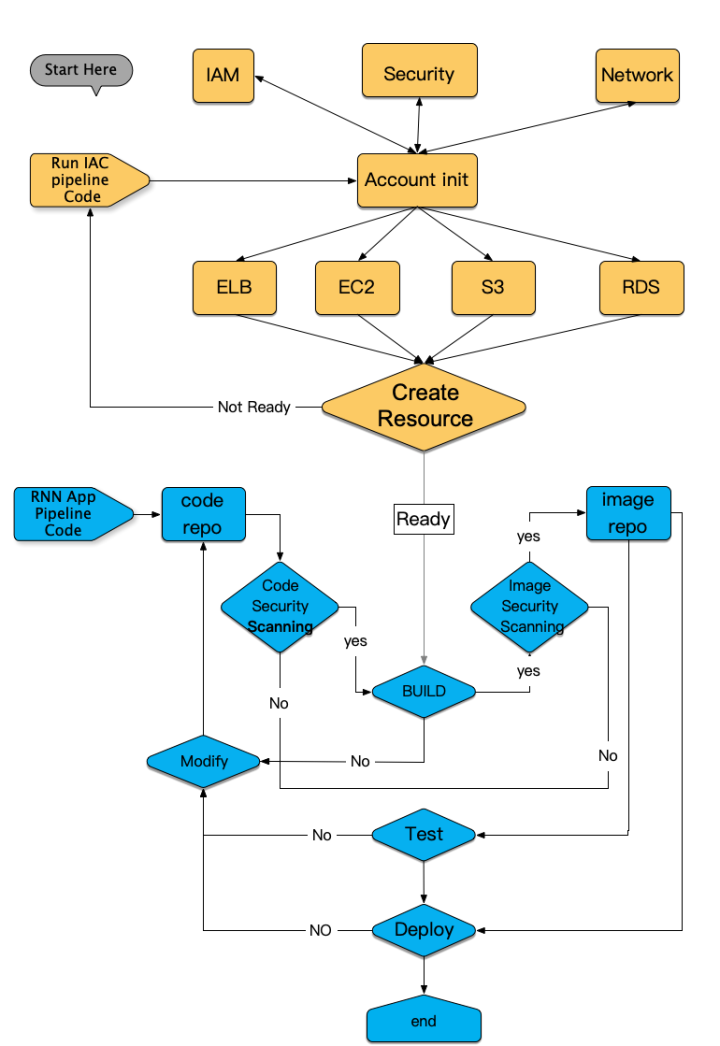From IAC to Automated App Deployment
原创From IAC to Automated App Deployment
原创
Introduction
In the fields of software development and IT operations, configuration management has always been an essential component. With the advancement of technology, configuration management has gone through various periods, giving rise to various tools and methods. This article will explore the history of configuration management and focus on four key aspects: version control, application configuration, system configuration, and cloud-based resource configuration.
Version Control
One of the earliest forms of configuration management is software repository version control. Through version control systems, teams can effectively track and manage code changes, ensuring the stability and maintainability of projects. Representative tools in this phase include CVS, Subversion, and Git, which laid the foundation for managing code infrastructure.
Application Configuration
As software systems became more complex, the need for application configuration became increasingly evident. Tools like Puppet, SaltStack, and Ansible emerged, enabling effective management of applications through automated configuration files. Additionally, in microservices architecture, configuration centers became critical components, aiding development teams in managing configuration information in distributed systems.
System Configuration
To achieve consistent configuration across the entire system, configuration management tools played a crucial role in managing system-level configurations. Puppet, SaltStack, and Ansible not only manage application-level configurations but also handle operating system and server configurations, automating the management of system infrastructure.
Cloud-Based Resource Configuration
With the rise of cloud computing, cloud-based resource configuration became a new area of configuration management. The concept of Infrastructure as Code (IAC) became popular during this period, and tools like Terraform and Pulumi made it possible to define and manage cloud infrastructure as code. This provided development teams with flexibility and scalability while reducing the risk of manual configuration errors.

Why Connect Everything
In today's rapidly changing technological landscape, connecting different stages of configuration management is essential to ensure team success. By leveraging software repository version control, application configuration, system configuration, and cloud-based resource configuration, teams can achieve more efficient and reliable configuration management, laying a solid foundation for project success. Integrating these configuration management methods and tools can bring multiple benefits:
- Comprehensive Management View: By connecting different stages, teams can gain a comprehensive configuration management view, from the code level to all levels of cloud infrastructure. This helps quickly identify and resolve issues.
- Automated Processes: Integrating configuration management tools automates the entire development to deployment process, reducing human errors and improving efficiency.
- Flexibility and Scalability: Integration at different stages provides teams with flexibility to choose the appropriate configuration management approach based on project requirements. It also offers scalability for future technological developments.
- Rapid Response to Changes: Integration of configuration management makes it easier for teams to adapt to changes. Whether it's code changes, application updates, or adjustments to cloud infrastructure, quick responses can ensure system stability and security.
Automation of Deployment Processes
Achieving end-to-end automation of the deployment process from IAC to app release can be divided into the following steps:
- Resource Request: Use IAC to request cloud platform resources such as virtual machines, storage, and networking. Resource requests can be made through the cloud platform's API or dedicated IAC frameworks.
- Environment Initialization: Initialize the requested resources, including installing the operating system and deploying basic components. This process can be automated using IAC scripts or tools.
- Monitoring Deployment: Before deploying the application, use IAC to deploy monitoring components to monitor the entire deployment process and the performance of the deployed application. Deployment of monitoring components can also be done using the cloud platform's API or dedicated IAC frameworks.
- Application Deployment: Finally, use configuration management tools like Ansible or SaltStack to automate the deployment of the application. This includes deploying the application, services, and other necessary components. Implementing IAC to Deploy APP End-to-End Automation Using GitHub Actions In the era of cloud-native, the deployment and operation of applications increasingly rely on automation, and GitOps is a Git-based DevOps practice that helps achieve end-to-end automation of applications. In this end-to-end automation workflow, there are several options for implementing IAC to Deploy APP end-to-end automation:
- Using IAC Frameworks: Utilize specialized IAC frameworks like Terraform, CloudFormation, etc., with their powerful resource definition and deployment capabilities, to achieve efficient automation deployment.
- Using Cloud Platform APIs: Directly call the APIs provided by cloud platforms to create and configure resources through custom scripts. Using Scripts or Tools: Utilize scripting languages (e.g., Shell, Python) or dedicated automation tools to write scripts for IAC to Deploy APP end-to-end automation.
GitHub Actions, as a natively integrated service within the GitHub platform, provides flexible and powerful CI/CD capabilities. Through GitHub Actions, teams can define event-triggered workflows that encompass the entire deployment process within the code repository's management. This article will describe how to use GitOps workflows to achieve end-to-end automation from IAC to Deploy APP.
The specific steps of the workflow include:
- Preparation:
Teams can store IAC code, such as Terraform, Ansible, etc., and application-related configurations in a Git code repository. When changes occur in the repository, GitHub Actions detects these changes and triggers predefined workflows.
Example:
- IAC Section: https://github.com/open-source-solution-design/DevOpsPlatform/tree/main/IAC/modules/
- Application Configuration: https://github.com/open-source-solution-design/DevOpsPlatform/tree/main/playbook/roles/
- IAC Deployment:
GitHub Actions automatically fetches IAC code and executes the corresponding deployment scripts to configure the infrastructure in the target environment. In this example, we will use Terraform to configure VPCs, subnets, routes, and virtual machines.
Example:
- Application Building:
If changes are detected in the application's code, GitHub Actions triggers the build step to ensure the latest version of the application is available.
- Environment Deployment:
For example, initializing a container cluster, integrating monitoring components, and ensuring real-time monitoring during deployment. In this example, we will use an Ansible playbook to deploy the K3s runtime environment as a container application platform.
Example:
- Application Release:
Through defined deployment scripts or tools, GitHub Actions deploys the application to the target environment, ensuring the entire application is up to date.
Example:
- https://github.com/open-source-solution-design/DevOpsPlatform/tree/main/playbook To achieve end-to-end automation, we use a CI/CD pipeline to automate the deployment of the application. In this example, we use GitHub Actions to integrate from IAC, initialize K3s, and deploy the application, updating the DNS release service.
GitHub Actions Pipeline Configuration File:
- https://github.com/open-source-solution-design/DevOpsPlatform/blob/main/.github/workflows/pipeline.yml Through this pipeline, all the mentioned steps are completed in a single workflow:
In the above example pipeline, end-to-end automation is achieved through various configurations and tools. The directory structure for related libraries and tools is as follows:
IAC Section Structure Explanation:
- IAC/modules/terraform/gcp: Module directory for Google Cloud.
- IAC/modules/terraform/aws: Module for AWS Cloud.
- IAC/modules/terraform/azure: Module for Azure Cloud. Each module directory provides sample IAC code for VPCs, subnets, routes, virtual machines, and basic security rules resource requests and configurations to meet basic requirements for using cloud IaaS resources.
- playbook/roles Configuration Library Role Explanation:
- app: Application service role, provides services required for running applications such as Nginx, Docker, MySQL, Redis, etc.
- chartmuseum: Used for storing and managing Helm/Chart packages.
- gitlab: Code repository role for storing and managing code and CI/CD.
- k3s: Kubernetes cluster role for managing Kubernetes clusters.
- k3s-reset: Kubernetes cluster reset role for resetting Kubernetes clusters.
- postgresql: PostgreSQL database role for providing PostgreSQL database services.
- secret-manager: Key management role for managing keys.
- cert-manager: Certificate management role for managing certificates.
- common: Common role that includes some common functions such as node hostnames and basic settings.
- harbor: Container image repository role for storing and managing container images.
- k3s-addon: Kubernetes cluster plugin role for installing Kubernetes cluster plugins.
- mysql: MySQL database role for providing MySQL database services.
- redis: Redis database role for providing Redis database services.
Related Solutions
In reference to the concept of connecting IAC resource management to end-to-end automated app deployment, currently maintained open-source solutions are as follows:
- Quickly initialize a DevOps platform based on Gitlab/Harbor and other open-source tools: https://github.com/open-source-solution-design/DevOpsPlatform.git
- Use GitHub Actions to automatically build an observability service platform: https://github.com/open-source-solution-design/ObservabilityPlatform.git
- Use GitHub Actions to build a solution based on Keycloak+Dex+OpenLDAP: https://github.com/open-source-solution-design/Federated-IdentityProvider.git
- Use GitHub Actions to build a solution based on K8S + Neo4j + Ollama for Langchain AI: https://github.com/open-source-solution-design/LangChainAI.git
- Use GitHub Actions to build a solution based on kubeSphere or Rancher container management platform: https://github.com/open-source-solution-design/ContainerPlatform.git
- Use GitHub Actions to build an open-source solution based on Linkerd2, Amesh, or Istio: https://github.com/open-source-solution-design/ServiceMesh.git
- Use GitHub Actions to build an open-source solution for a microservices runtime environment, including an application gateway, registry center, and configuration center: https://github.com/open-source-solution-design/MicroService.git
Demo Code Repositories from C to JavaScript Apps
原创声明:本文系作者授权腾讯云开发者社区发表,未经许可,不得转载。
如有侵权,请联系 cloudcommunity@tencent.com 删除。
原创声明:本文系作者授权腾讯云开发者社区发表,未经许可,不得转载。
如有侵权,请联系 cloudcommunity@tencent.com 删除。